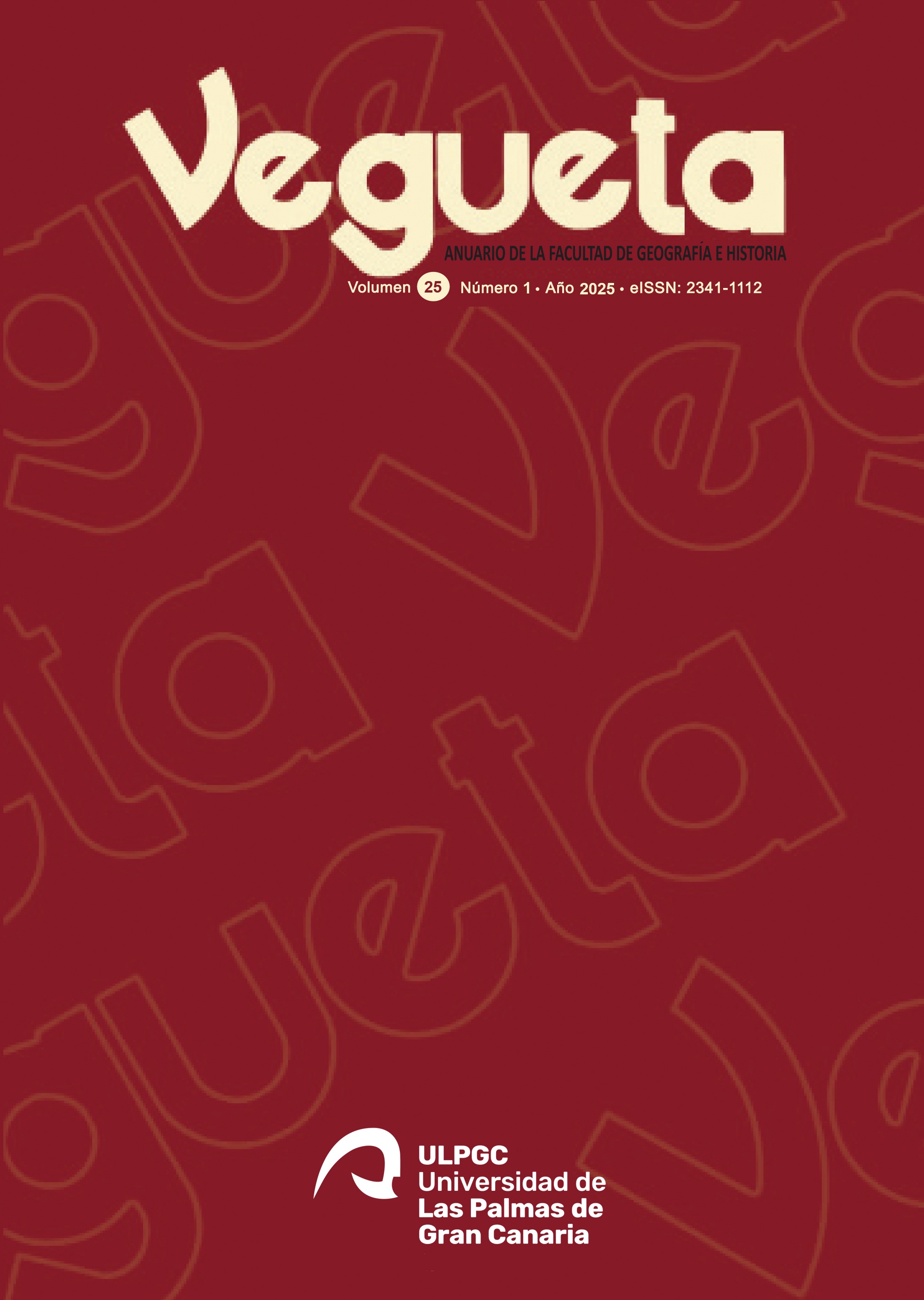Uso de los servicios de redes de transporte en México. Extensión, determinantes y tipos de usuarios
DOI:
https://doi.org/10.51349/veg.2025.1.04Palabras clave:
México, Ridesourcing, Viajes al trabajo, Taxis, empresas de redes de transporteResumen
Tras diez años del comienzo de los servicios de redes de transporte en México, aún subsisten dudas sobre su extensión, determinantes y tipo de usuarios. En este artículo se recurre al Censo 2020 de México, para responder a esas interrogantes. Se descubre que es aún minoritario el uso de este servicio, aunque representa ya 1/3 de los viajes en taxi. El factor que más incide en su uso es el tipo de hogar, con un uso preferente de quienes viven en hogares unipersonales y sin consanguineidad. Se revela también que estos servicios satisfacen una considerable diversidad de necesidades y usuarios.
Descargas
Referencias
-Acheampong, R. A., Siiba, A., Okyere, D. K., y Tuffour, J. P. (2020): Mobility-on-demand: An empirical study of internet-based ride-hailing adoption factors, travel characteristics and mode substitution effects. Transportation Research Part C, 115: 1-22. https://doi.org/10.1016/j.trc.2020.102638
-Afcl (26 octubre, 2017): Escala conflicto entre taxistas y Uber en Cancún; hay un muerto. El Universal. https://www.eluniversal.com.mx/estados/escala-conflicto-entre-taxistas-y-uber-en-cancun-hay-un-muerto
-Aguilera García, A., Gomez, J., Velázquez, G., y Vasallo, J. M. (2022): Ridesourcing vs. traditional taxi services: Understanding users’ choices and preferences in Spain. Transportation Research A, 155: 161-178. https://doi.org/10.1016/j.tra.2021.11.002
-Alemi, F., Circella, G., Mokhtarian, P., y Handy, S. (2019): What drives the use of ridehailing in California? Ordered probit models of the usage frequency of Uber and Lyft. Transportation Research Part C, 102: 233-248. https://doi.org/10.1016/j.trc.2018.12.016
-Azimi, G., Rahimi, A., Asgari, H., y Jin, X. (2020): Role of Attitudes in Transit and Auto Users’ Mode Choice of Ridesourcing. Transportation Research Record, 2674: 1-16. https://doi.org/10.1177/0361198120941841
-Azimi, G., Rahimi, A., y Jin, X. (2021): Exploring the attitudes of Millennials and Generation Xers toward ridesourcing services. Transportation, https://doi.org/10.1007/s11116-021-10227-y
-Barbour, N., Zhang, Y., y Mannering, F. (2019): An exploratory analysis of the role of socio-demographic and health-related factors in ridesourcing behavior. Journal of Transport and Health, 16: 100832. https://doi.org/10.1016/j.jth.2020.100832
-Burgel, B. J., Gillen, M., y White, M. C. (2014): Work-Related Violence Experienced by Urban Taxi Drivers. American Journal of Industrial Medicine, 57(12): 1377-1385. https://doi.org/10.1002/ajim.22397
-Burgos, G. (9 enero, 2021). Taxistas, peones del narco. El Despertador de Quintana Roo. https://eldespertadorqr.com/taxistas-peones-del-narco/
-Camhaji, E. (15 septiembre, 2017). Un viaje en Cabify, el último rastro de Mara Fernanda Castilla. El País. https://elpais.com/internacional/2017/09/13/mexico/1505327661_790292.html
-Cetin, T., y Deakin, E. (2017): Regulation of taxis and the rise of ridesharing. Transport Policy, 76: 149-158. https://doi.org/10.1016/j.tranpol.2017.09.002
-Competitive Intelligence Unit (2020): Plataformas de Transporte y Comida. Adopción y Preferencia. Mexico City. https://www.theciu.com/publicaciones-2/2020/1/20/plataformas-de-transporte-y-comida-adopcin-y-preferencia
-Cramer, J., y Krueger, A. B. (2016): Disruptive Change in the Taxi Business: The Case of Uber. American Economic Review: Papers and Proceedings, 106(5): 177-182. http://dx.doi.org/10.1257/aer.p20161002
-de Souza Silva, L. A., de Andrade, M. O., y Alves Maia, M. L. (2018): How does ride-hailing systems demand affect individual transport regulation? Research in Transportation Economics, 69: 600-606. https://doi.org/10.1016/j.retrec.2018.06.010
-Deighton-Smith, R. (2021). Ridesourcing services: regulatory challenges and regulatory approaches, en OECD Case Studies on the Regulatory Challenges Raised by Innovation and Regulatory Responses, OECD, Paris: 77-97.
-Deka, D., y Fei, D. (2019): A comparison of the personal and neighborhood characteristics associated with ridesourcing, transit use, and driving with NHTS data. Journal of Transport Geography, 76: 24-33. https://doi.org/10.1016/j.jtrangeo.2019.03.001
-Dias, F. F., Lavieri, P. S., Garikapati, V. M., Astroza, S., Pendyala, R. M., y Bhat, C. R. (2017): A behavioral choice model of the use of car-sharing and ride-sourcing services. Transportation, 44(6): 1307-1323. https://doi.org/10.1007/s11116-017-9797-8
-Eisenmeier, S.R.J. (2019). Ride-sharing platforms in developing countries: effects and implications in Mexico City. Background Paper Series 3. Oxford: University of Oxford.
-Erhardt, G., Roy, S., Cooper, D., Sana, B., Chen, M. y Castiglione, J. (2019). Do transportation network companies decrease or increase congestion?. Science Advances, 5(5): 1-11. https://doi.org/10.1126/sciadv.aau2670
-Fu, X.M. (2020): Does heavy ICT usage contribute to the adoption of ride-hailing app? Travel Behaviour and Society, 21: 101-108. https://doi.org/10.1016/j.tbs.2020.06.005
-Garcia Peralta, B., y Hofer, A. (2006): Housing for the Working Class on the Periphery of Mexico City: A New Version of Gated Communities. Social Justice, 33(3): 129-141.
-García Tejeda, C. E. (2017): La regulación de Uber en las ciudades de México: el uso del análisis jurídico y la estadística no paramétrica para comparar las alternativas de transporte. Revista de Jurisprudencia Argentina, 2: 55-79.
-Ghaffar, A., Mitra, S., y Hyland, M. (2020): Modelling determinants of ridesourcing usage: A census track-level analysis of Chicago. Transportation Research Part C, 119; 102769. https://doi.org/10.1016/j.trc.2020.102769
-Goletz, M., y Bahamonde-Birke, F. J. (2021): The ride-sourcing industry: status-quo and outlook. Transportation Planning and Technology, 44(6): 561-576. https://doi.org/10.1080/03081060.2021.1943128
-Goodspeed, R., Xie, T., Dillahung, T. R., y Lusting, J. (2019): An alternative to slow transit, drunk driving, and walking in bad weather: An exploratory study of ridesourcing mode choice and demand. Journal of Transport Geography, 79: 102481. https://doi.org/10.1016/j.jtrangeo.2019.102481
-Grahn, R., Harper, C. D., Hendrickson, C., Qian, Z., and Matthews, S. (2020): Socioeconomic and usage characteristics of transportation network company (TNC) riders. Transportation, 47(6): 3047-3067. https://doi.org/10.1007/s11116-019-09989-3
-Grillo, I. (10 junio, 2015): Uber Drivers Hunted Down in Mexico as Taxi Unions Fight Online Competition. Time. https://time.com/3915705/uber-mexico-dispute/
-Habib, K. N. (2019): Mode choice modelling for hailable rides: An investigation of the competition of Uber with other modes by using an integrated non-compensatory choice model with probabilistic choice set formation. Transportation Research Part A, 129: 205-216. https://doi.org/10.1016/j.tra.2019.08.014
-Henao, A. y Marshall, W. E. (2018). The impact of ride-hailing on vehicle miles travelled. Transportation, 46: 2173-2194. https://doi.org/10.1007/s11116-018-9923-2
-Henaro, S. (4 agosto, 2015): Uber: la última frontera y el nuevo paradigma. Forbes: https://www.forbes.com.mx/uber-la-ultima-frontera-y-el-nuevo-paradigma/
-Hidalgo, D., and Hizenga, C. (2013): Implementation of sustainable urban transport in Latin America. Research in Transportation Economics, 40: 66-77. http://dx.doi.org/10.1016/j.retrec.2012.06.034
-Instituto Nacional de Estadística y Geografía (2021): Censo de Población y Vivienda 2020. INEGI. https://www.inegi.org.mx/programas/ccpv/2020/#Microdatos
-Khavarian-Garmsin, A.R., Sharifi, A., y Abadi, M.H.H. (2021). The Social, Economic, and Environmental Impacts of Ridesourcing Services: A Literature Review. Future Transportation, 1: 268-289. https://doi.org/10.3390/futuretransp1020016
-Kong, H., Zhang, X., y Zhao, J. (2020): How does ridesourcing substitute for public transit? A geospatial perspective in Chengdu, China. Journal of Transport Geography, 86(102769): 1-11. https://doi.org/10.1016/j.jtrangeo.2020.102769
-Levantan a 4 choferes de Uber en Guadalajara (6 de agosto, 2015). El Diario MX. https://diario.mx/Nacional/2015-08-06_c18fe78a/levantan-a-4-choferes-de-uber-en-guadalajara/
-Maricato, E. (2013): Vulnerability and Risk in the Metropolis of the Periphery: Everyday Life in Brazil’s Cities. Progressive Planning, 196: 28-30.
-McKane, R. G., y Hess, D. J. (2022): Ridesourcing and urban inequality in Chicago: Connecting mobility disparities to unequal development, gentrification, and displacement. Environment and Planning A: Economy and Space, 54(3): 572-592. https://doi.org/10.1177/0308518x211047872
-Mohamed, M.J., Rye, T., y Fonzone, A. (2020): The utilization and user characteristics or Uber services in London. Transportation Planning and Technology, 43(4): 424-441. https://doi.org/10.1080/03081060.2020.1747205
-Mostofi, H., Masoumi, H., y Dienel, H.-L. (2020): The Association between Regular Use of Ridesourcing and Walking Mode Choice in Cairo and Teheran. Sustainability, 12(14): 5623. https://doi.org/10.3390/su12145623
-Nustad, K. G. (2004). The Right to Stay in Cato Crest: Formality and Informality in a South African Development Project, en K.T. Hansen y M. Vaa (eds.) Reconsidering Informality. Perspectives from Urban Africa, Nordiska Afrikainstitutet, Uppsala: 45-61.
-Puche, M. L. (2018): Regulation of TNCs in Latin America: The Case of Uber Regulation in Mexico City and Bogota, en M. Finger y M. Audouin (eds.) The Governance of Smart Transportation Systems: Towards New Organizational Structures for Development of Shared, Automated, Electric and Integrated Mobility, Springer, Cham: 37-54.
-Rayle, L., Dai, D., Chan, N., Cervero, R., y Shaheen, S. (2016): Just a better taxi? A survey-based comparison of taxis, transit, and ridesourcing services in San Francisco. Transport Policy, 45: 168-178. http://dx.doi.org/10.1016/j.tranpol.2015.10.004
-Redacción (30 noviembre, 2019). Katsuko Nakamura: el caso de la joven atacada en un Uber en México que rebela un mercado negro de cuentas de conductores. BBC News. https://www.bbc.com/mundo/noticias-america-latina-50609217
-Ruijter, A., Cats, O., Kucharski, R. y Lint, H. (2021). Evolution of Labour Supply in Ridesourcing. Transportmetrica B: Transport Dynamics, 10(1): 599-626. https://doi.org/10.1080/21680566.2021.2024917
-Ruijter, A., Cats, O., y Lint, H. (2024). Ridesourcing platforms thrive on socio-economic inequality. Nature Scientific Reports, 14: 7371. https://doi.org/10.1038/s41598-024-57540-x
-Sabogal-Cardona, O., Oviedo, D., Scholl, L., Crotte, A., y Bedoya-Maya, F. (2021): Not my usual trip: Ride-haling characterization in Mexico City. Travel Behaviour and Society, 25: 233-245. https://doi.org/10.1016/j.tbs.2021.07.010
-Sands, S., Ferraro, C., Campbell, C., Kietzmann, J., Andonopoulos, V. V. (2020): Who shares? Profiling consumers in the sharing economy. Australian Marketing Journal, 2020: 28, 22.33. https://doi.org/10.1016/j.ausmj.2020.06.005
-Sham, R., Wahab, S. N., Anuar, M. M., Hong, T. W., y Tan, Y. J. (2019): Safety Indicator for Taxi Users in Urban Area. International Journal of Supply and Chain Management, 8(2): 1035-1041.
-Shirgaokar, M., Agrawal, A.W., Dobbs, B., Misra, A., y Wach, M. (2021). Differences in rail-hailing adoption by older Californians among types of locations. The Journal of Transport and Land Use, 14(1): 367-387. http://dx.doi.org/10.5198/jtlu.2021.1827
-Sikder, Sujan (2016). Who Uses Ride-Hailing Services in the U.S? Transportation Research Record, 2673(12), 1-15. https://doi.org/10.1177/0361198119859302
-Social Exclusion Unit (2003): Making the Connections: Final Report on Transport and Social Exclusion, Office of the Deputy Prime Minister, London.
-Soto, Jose J., Cantillo, Victor y Arellana, Julián (2021). Market segmentation for incentivising sustainable transport policies. Transportation Research Part D, 99: 102013. https://doi.org/10.1016/j.trd.2021.103013
-Terry, J., y Bachmann, C. (2020): Spatial Characteristics of Transit-Integrated Ridesourcing Trips and Their Competitiveness with Transit and Walking Alternatives. Transportation Research Record, 2674(3): 329-340. https://doi.org/10.1177/0361198120909842
-Thebault-Spieker, J., Terveen, L., y Hecht, B. (2017): Toward a geographic understanding of the sharing economy. Systemic biases in Uberx and TaskRabbit. ACM Transactions on Computer-Human Interaction, 24(3): 1-40. http://dx.doi.org/10.1145/3058499
-Wallsten, S. (2015): The Competitive Effects of the Sharing Economy: How is Uber Changing Taxis?, Technology Policy Institute, New York.
-Yáñez, M. F., Mansilla, P., y Ortúzar, J. de D. (2010): The Santiago Panel: measuring the effects of implementing Transantiago. Transportation, 37(1): 125-149. https://doi.org/10.1007/s11116-009-9223-y
-Ye, R., y Titheridge, H. (2019): The determinants of commuting satisfaction in low-income population: A case study of Xi’an, China. Travel Behaviour and Society, 16: 272-283. https://doi.org/10.1016/j.tbs.2019.01.005
-Yu, H., y Peng, Z.R. (2019): Exploring the spatial variation of ridesourcing demand and its relationship to built environment and socioeconomic factors with the geographically weighted Poisson regression. Journal of Transport Geography, 75: 147-163. https://doi.org/10.1016/j.jtrangeo.2019.01.004
-Yu (Marco), N. (2017): How can the taxi industry survive the tide of ridesourcing? Evidence from Shenzhen, China. Transportation Research Part C., 79: 242-256. http://dx.doi.org/10.1016/j.trc.2017.03.017
Descargas
Publicado
Número
Sección
Licencia
Derechos de autor 2024 Fernando Calonge Reillo

Esta obra está bajo una licencia internacional Creative Commons Atribución-NoComercial-SinDerivadas 4.0.




